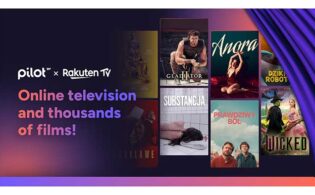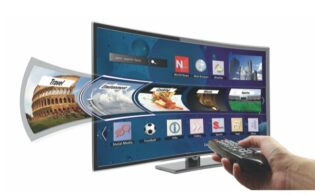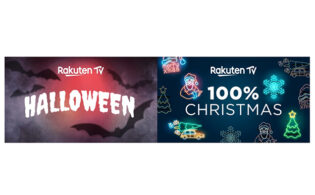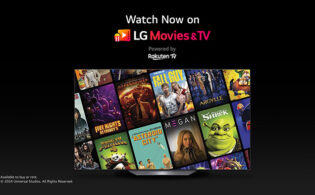Marcos Milanez, chief content officer at Rakuten TV, showcased how the service is driving AVOD and FAST channel usage across Europe with its slate of acquired fare and originals at the FAST Festival.
You can watch Milanez’s keynote conversation with World Screen’s Anna Carugati about his approach to content partnerships here.
“Customers are getting more used to watching free-to-air content through these FAST platforms; it’s more easily accessible,” Milanez said. “And because the content is being improved, the relevance of those IPs is easily noticeable to the users, therefore [leading to] higher consumption.”
Milanez discussed how Rakuten TV’s strategy has evolved amid gains in usage. “Unlike other platforms on FAST, we are an app,” Milanez said. “The benefit is that neutrality element that we have, and we’re available across all of the smart TV brands. Engagement and viewership have grown massively, which has shifted our strategy across multiple pillars—programming, product and tech and the UI.”
The service launched as a transactional VOD store and began its journey into AVOD and FAST in 2019. “Throughout these years, we’ve changed quite a few things in terms of the prominence that we give that content, if it’s TVOD or AVOD or FAST, to a certain user, depending on what type of user is visiting the store. The scheduling strategy has changed because this was entirely new for us in comparison to the TVOD background that we had. We’ve progressed so much throughout these last five years working in FAST and AVOD. The departments are far more well-suited now to engage with FAST and AVOD than what it was in the beginning, where it was still a big unknown.”
Rakuten TV has been investing in some originals, co-producing or commissioning a handful every year, Milanez noted. “We started this back in 2019, primarily with feature sports documentaries. Fast-forward to now, we’ve broadened to other genres such as reality and talent shows. We definitely don’t want to stop doing sports feature documentaries, but reality and talent shows have that stickiness in engagement and repeat viewership. They equally appeal to brands wanting to associate themselves with those originals.”
Discussing the relative strengths of single-IP versus multi-genre services, Milanez noted that having a strong selection of both is key for keeping audiences engaged.
“With a multi-genre channel, we try not to have a certain number of multiple IPs with very small blocks of programming because that’s where you start confusing the viewer and potentially losing them. Even on the genre channel, we have certain scheduling structures. With single IP, we will make some gambles, depending on the relevance of the show. We will track if that has been broadcast or been licensed in certain outlets in that market. Another testbed that we have is when we license that content for one of our O-and-O channels, we see how it performs. That’s a really good stepping stone to see, well, could this handle being a single-IP channel?”
Constantly refreshing the lineup, informed by data and the knowledge of teams in local markets, is key, including trying “a different scheduling grid structure within our O-and-O channels or tweaking the algorithms that we have in our store to see what’s driving engagement. Once these cases start coming up with positive results, how can we find more within that subgenre?”
Tailoring the lineup to local markets is also paramount, Milanez said. “Each territory will have a different content acquisitions strategy. There are different legal implications as well, depending on the territory. We are available in all of Europe, 40-plus markets. Every year, we try to put a bit more pressure to grow so that at some point, we have a fully localized FAST channel offering at the same quality degree, not only in Western Europe and the Nordics and Poland but also in the remaining footprint.”
Milanez talked about enhancements Rakuten TV has made to its user interface to help drive the discovery of content. “Throughout the day, you might have more kids’ or news content than at night, when you’d see other types of genres. The same [thing] happens with weekdays and weekends. We noticed that the consumption of FAST channels and AVOD, depending on the genre, really differs depending if it’s a weekday or weekend, daytime or nighttime. And it’s quite different as well from the consumption on TVOD. There’s certainly plenty more to do in terms of customization and segmentation, where you can always drill down to more and more layers.”
Rakuten TV is tapping into the gains in connected TV advertising across Europe. “There are multiple benefits for the ad buyer,” Milanez noted. “It’s a more segmented demographic instead of a big cannonball to a free-to-air broadcaster. In terms of ROI, they get more out of their investment. For the user, it’s also great because you can have more relevant and contextual advertising.”
On the road ahead for Rakuten TV, Milanez explained that refinements to the UI and content strategy are key. “When you think of FAST, the first thing that comes to mind are the traditional categories: movies, news, TV series, kids and so on. We’re looking to identify subgenres that have a strong fan base with high average view time.”






